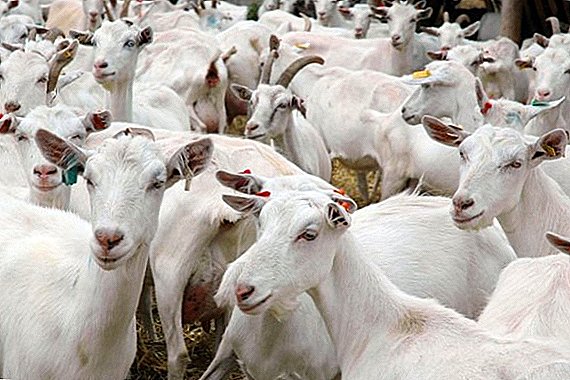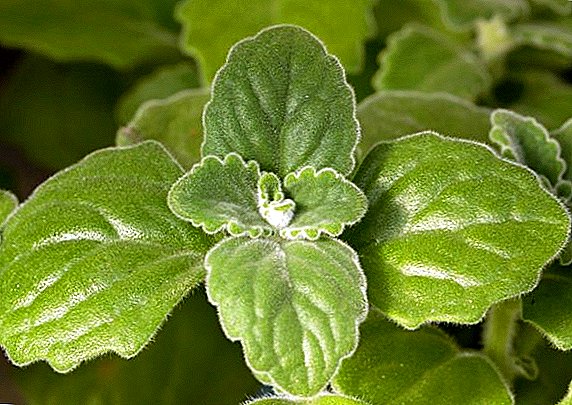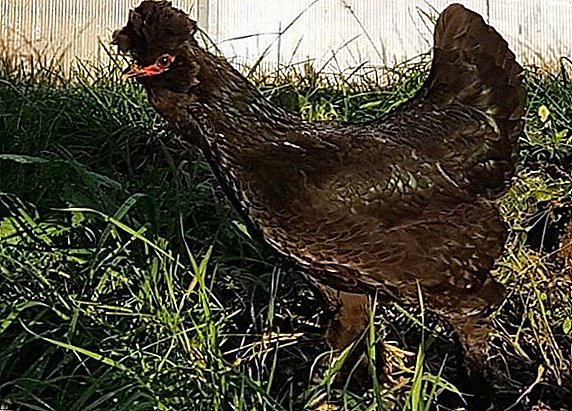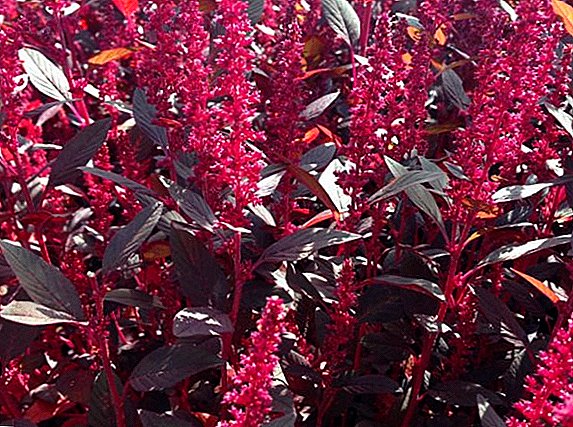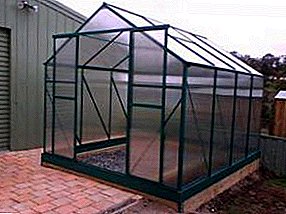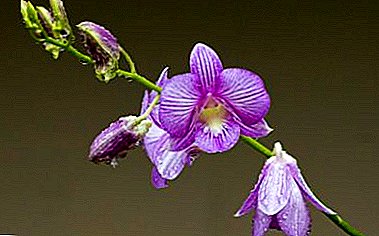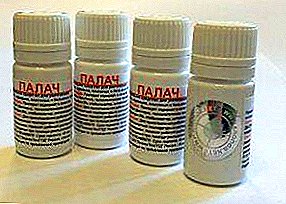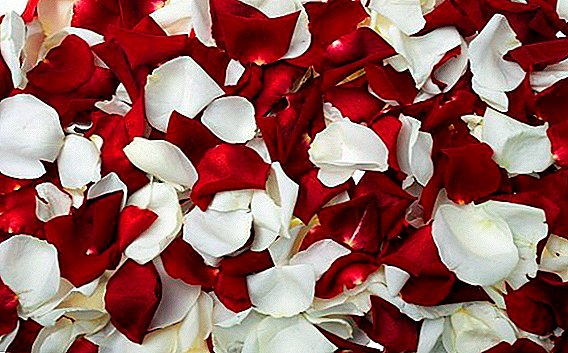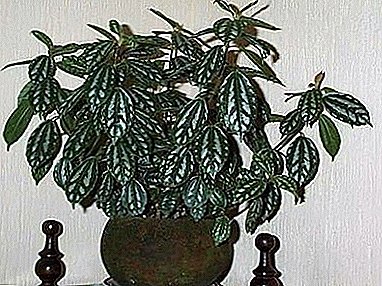
Pilea (Pilea) is an ornamental home plant of the nettle family. It grows in almost all tropical zones, except Australia.
There are about 400 species in the family, the most common are: “Cadier Pylae”, “Monkey Leaf Pylya”, “Norfolk Pylae”, “Lymphatic Pylium”, “Peperomidae Pylyae”.
Flower growers love this flower for its decoration. The flowers of “Piley” are inconspicuous, small, but the leaves attract with a variety of bright colors.
Home care
"Pilea" unpretentious in the care. Despite the large number of species and varieties of this plant, care and maintenance for all are basically the same. You can buy this plant in the flower shop all year round. “Pilea” looks good both in hanging pots (climbing varieties) and ordinary pots on window sills (bush varieties).
Reference! Unlike its closest relative, nettle, the wild “Pilea” does not have burning hairs on the leaf surface, therefore it cannot “sting.” Gloves are not required when working with it.
Pruning
 Grows fast. Young shoots are more decorative, so the plant must be pruned every year.
Grows fast. Young shoots are more decorative, so the plant must be pruned every year.
Crop better 3-4 longest shoots once a month, this will keep the flower compact.
Cut stems are suitable as planting material for propagation by cutting.
It is also necessary to pinch the tops of the plant so that it is more lush and does not stretch in height.
Lighting
Habitat for "Piley" is better to choose on the east or south-east side of the room, as it likes diffused light.
Important! Avoid direct sunlight, they can burn the delicate leaves of the plant.
In the spring - summer period, the flower can be carried out on the balcony or in the garden, it is desirable to place it in the shade of larger plants or in the absence of such, to make a protective canopy made of paper for Pilei.
In winter, it is desirable for the flower to create additional lighting. conventional light bulbs, as the color of the leaves fades from a lack of light.
Watering and fertilizer
Pilea loves moisture. To maintain the level of humidity it needs, the pot can be placed on a tray with wet pebbles. It is worth watering a flower as soon as the top layer of soil dries, but you should not be zealous - excessive watering is harmful for the plant, its leaves can become sluggish and lose their bright color.
Reference! Water should be well settled. In the summer the plant should be watered more abundantly, in the winter less often - 1-2 times a week.
 “Pilea” favorably refers to fertilizer, the more so with a lack of nutrients in the soil, its leaves begin to shrink.
“Pilea” favorably refers to fertilizer, the more so with a lack of nutrients in the soil, its leaves begin to shrink.
Feed the plant in the usual pattern of fertilization for home flowers: spring - summer season once a week, autumn - winter season once a month.
Fertilizer is used universal for flowering ornamental plants. You can buy it in any flower shop.
Temperature and humidity
The plant does not tolerate drafts and can catch a cold. Comfortable temperature is 20-24 degrees. Some species can quite easily exist in the cold. For example, the “Pilea”, periferous, calmly tolerates cooling to 10–12 degrees.
The air in the room where the flower is located must be humid. It is not necessary to create artificial moistening for a flower, sprinkling its leaves, not all varieties of a flower tolerate it, especially species with velvety leaves, they immediately lose their decorative effect and wither. It is better to put a household air humidifier in the room, keep the plant away from the batteries, or place the plant on a pallet with wet pebbles.
Bloom
Flowers in the "Piley" inconspicuous, cream or light pink shadecollected in small inflorescences. This plant is often called "artillery", as it has the ability to shoot pollen from buds in all directions.
It blooms all year round. Post bloom fruits appear. In some plant species, flowering is absent.
Transfer
 Replant the flower once a year in spring or summer.
Replant the flower once a year in spring or summer.
Capacity for disembarkation "Piley" is taken shallow, since it has superficial root growth, the maximum depth of disembarkation should be from 7 to 10 cm.
Ceramsite drainage is placed at the bottom of the pot (about 1/3 of the total volume), as the plant can be damaged by excess moisture accumulating in the soil.
For planting use the following mixture in equal parts: sand, peat, turf land.
Useful video with transplant recommendations:
Breeding
The plant propagates by seeds and cuttings. Some species of plants are capable of independent reproduction through the ingress of seeds from ripe fruits into the soil. The simplest way for a flower to propagate is cutting. Cutting "Pilea" can be propagated throughout the year. For this, the stem of the plant is cut into cuttings (each approximately 7 cm), which are then placed in water before the roots appear on them, then planted into the soil. Cuttings can immediately be planted in a loose soil, without waiting for the roots to appear, with this method of planting the cutting should be covered with a glass jar (greenhouse effect) and placed in a warm place, after rooting, remove the jar.
A photo
The photo shows "Pilea" with proper care at home:




Benefit and harm
"Pilea" has the ability to improve energy in the room where it lives: anxiety, fatigue, mood is raised. The plant is harmless enough, so the danger to pets and children is not.
Diseases
 Signs and causes of poor plant health:
Signs and causes of poor plant health:
- Leaves dry and fall: The cause may be excessively high air temperature in the room or insufficient watering. It is worth moving the flower to a cooler place and adjusting the watering;
- The leaves turn black, wither and fall: the cause may be excessive soil moisture. It is necessary to adjust the watering. In case of rotting of the root system, the plant should be transplanted by removing the rotting parts of the root;
- Leaves fade: the plant stretches upwards, the edges of the leaves dry, brown spots appear on them. The plant does not have enough light, place it in a more lighted place, avoiding direct sunlight on it;
- If the lower leaves fall: the flower quickly grows, the lower stems become bare, this process is peculiar to almost all types of "Pilea". It's time to cut it off. Cut stems are used as planting material.
Pests
Typically, the flower is attacked by a mealybug, a spider mite, aphid, and a scab. The presence of these pests is not difficult to detect:
- Mealybug entangles the stems and leaves with white secretions similar to cotton;
- Spider mite spreads spiderwebs, striking the inner surface of the leaves, they turn yellow, wither;
- Shchitovka- this insect is in the form of plaques with a wax coating, it usually sticks to the lower surface of the leaves, the leaves wither, fall off;
- Aphid - a greenish insect, colonized, has the ability to suck the juice from the stems and leaves of the plant.
The method of dealing with these pests is quite simple. The plant is treated with an insecticidal solution. In the event of defeat with mealybugs and scutes, insects can be removed with a cotton swab dipped in diluted alcohol.
- Cadier;
- "Monetolist";
- Peperom-shaped.
"Pilea", more precisely, all the varieties of this flower will be able to decorate any interior due to its originality, rich color, and not picky character.


